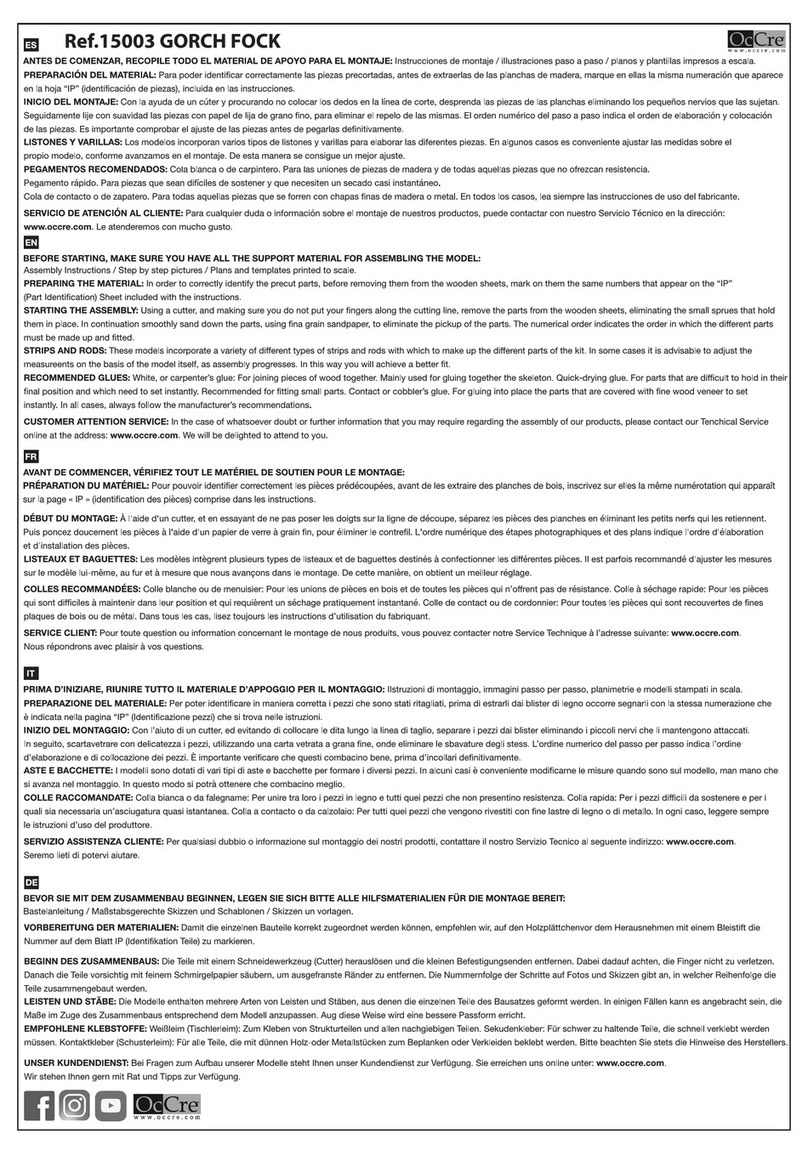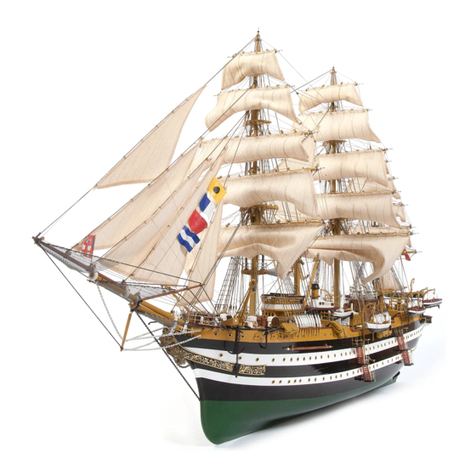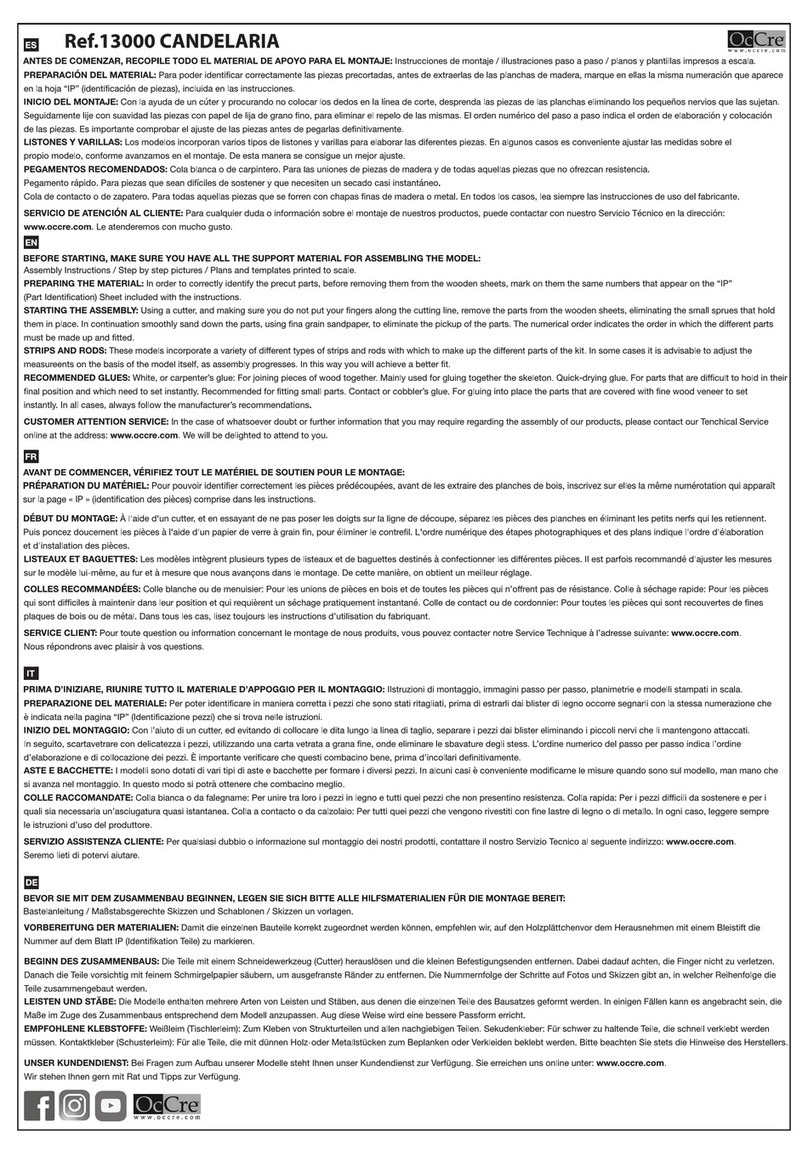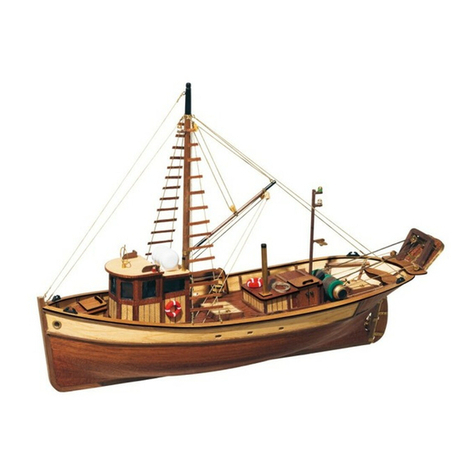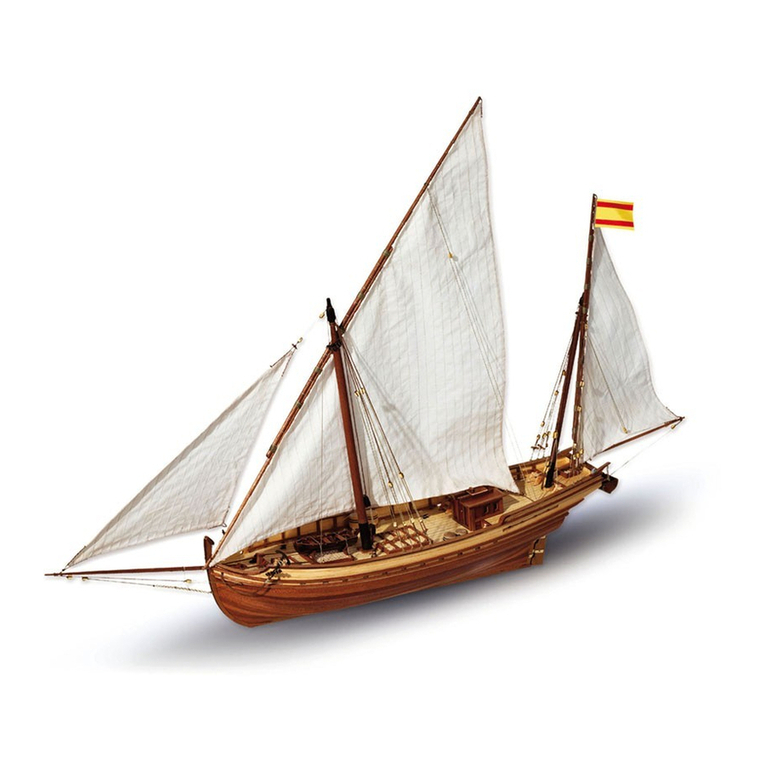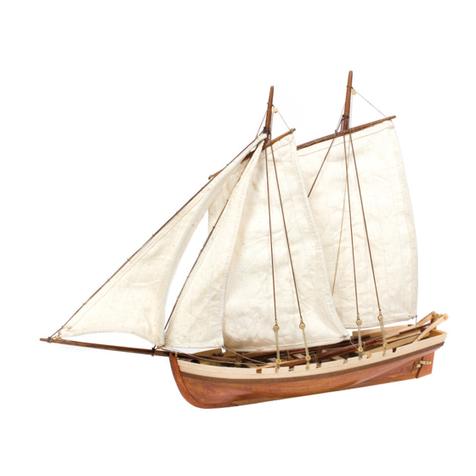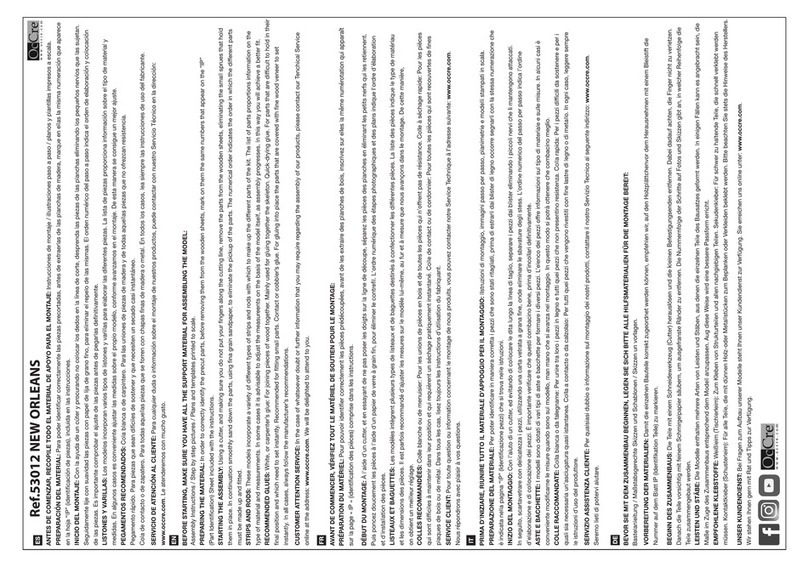PHOTO 62. Collez les dispositifs de protection sur les supports. Utilisez du cyanoacrylate. Peignez de couleur rouge bordeaux
et de couleur noire.
PHOTO 63. Collez les freins 100 sur les barres 101 aux distances indiquées sur l'image. Utilisez du cyanoacrylate.
PHOTO 64. Collez les freins sur les supports. Les freins doivent être parallèles aux roues. Puis, peindre de couleur noire.
PHOTO 65. Formez la grille du pare-choc en collant les pièces 102, 103, 104 et 105. Utilisez du cyanoacrylate et peignez de
couleur rouge bordeaux.
PHOTO 66. Collez les montants 106 emboîtés dans l'orifice de l'escalier. Utilisez du cyanoacrylate.
PHOTO 67. Insérez un montant 107 dans l'orifice de la plate-forme. Collez les pièces 108, 109 et 110. Entre les montants,
collez la main-courante 111.
PHOTO 68. Peignez le côté de la barrière d'escalier en gris à l'intérieur et collez la décoration 57 sur l'extérieur. Collez le
montant 112, il doit être aligné sur le montant de l'étage supérieur. Collez une pièce 76 sur la zone indiquée sur l'image.
PHOTO 69. Sur la base 114, collez les pièces 113, 115 et 116. Peignez les pièces de couleur noire et or.
PHOTO 70. Peignez de couleur noire les supports 118 et collez-les sur les faces des plates-formes d'accès. Puis, collez les
tableaux de commandes.
PHOTOS 71 et 72. Réalisez deux orifices de ø 1,5 x 5 mm sur la pièce 119 à la distance indiquée sur l'image. Puis, introduisez
et fixez deux pièces 120. Fixez les 24 montants 106 au plafond et peignez-les de couleur or. Peignez de couleur marron le
panneau et installez les lumières 121, la moulure 122 et le panneau 123. Emboîtez et collez-le au plafond.
PHOTO 73. Formez les marches en collant les pièces 124, 125, 126 et 127. Utilisez de la colle blanche. Peignez les côtés en
noir et le reste en gris.
PHOTO 74. Collez les marches sur les plates-formes. Emboîtez et collez les barres 128 et 129 à l'aide d'une pièce 76.
PHOTOS 75 et 76. Peignez en gris et collez les côtés intérieurs 130 et 131 appuyés sur les montants correspondants.
Collez également les côtés extérieurs 132. Humidifiez les pièces 131 et 132 pour faciliter la courbure. Peignez-les couleur
crème à l'extérieur. Adaptez le fil en laiton 133 aux vides de l'escalier et aux courbes 134, et collez-les aux montants
au dessus des côtés et aux extrémités. Collez également les parties droites 135. Collez les filets 136 et 137
entre les barres.
PHOTOS 77 et 78. Peignez de couleur marron les bases des bancs 138 et 139. À l'aide d'un crayon, simulez le plancher en
maintenant une distance de 2 mm entre les planches. Collez les pieds 140 sur les bases. Insérez les supports 141 sur les
bases. Puis, insérez les dossiers 142 et 143. Fixez les fils 144 et 145 pour assembler les pieds. Peignez en bordeaux et marron
les pièces indiquées sur l'image.
PHOTO 79. Collez les bancs déjà montés dans les emplacements situés dans le sol de l'étage supérieur.
PHOTOS 80 et 81.
Dans l'espace restant sur le côté du siège simple, emboîtez et collez la base du trolley 146, la colonne 147 et les finitions 148 et
149. Peignez la colonne de couleur rouge et ocre. Peignez le phare 150 de couleur métal et l'ampoule en blanc. Collez les
vitrages 151de part et d'autre. Collez le phare sur la barre 152, et celle-ci sur la pièce 76 du sol. Peignez la barre en noir.
PHOTO 82. Peignez la poignée153 et collez-la sur la base. Formez et fixez le boulon 157. Collez les décorations 158. Au
dessus de la fenêtre, collez le panneau 22 et la lumière 121. Collez et peignez la poignée 156. Collez le phare 159, avec son
cristal 160.
PHOTO 83. Collez la décoration des côtés 161. Collez sur la base 162 le panneau 163 et collez le panneau à sa place.
PHOTO 84. Collez la roue du trolley 164, collez le trolley 165, le renfort 166 et le câble 167. Peignez de couleur métal et collez
l'ensemble sur la base. Collez les décorations 168, les latéraux supérieurs 169 et les panneaux 170 préalablement collés sur
les bases 171. Finalement, collez le rebord 172 autour du sol de l'étage supérieur. Humidifiez bien le listeau pour qu'il s'adapte
à la courbe. Puis, peindre de couleur noire.
Nous avons réalisé ce modèle dans un seul but, celui de vous faire passer de bons moments en construisant un objet
reproduisant un magnifique modèle.
Si nous y sommes parvenu, nous avons atteint notre but. Merci.
OCCRE.

